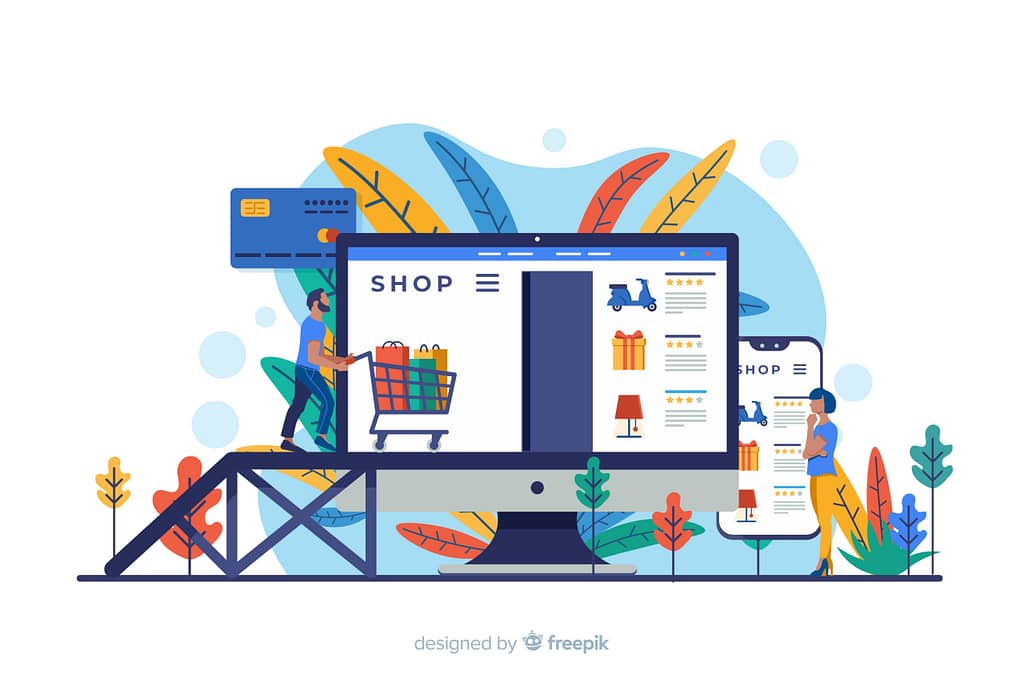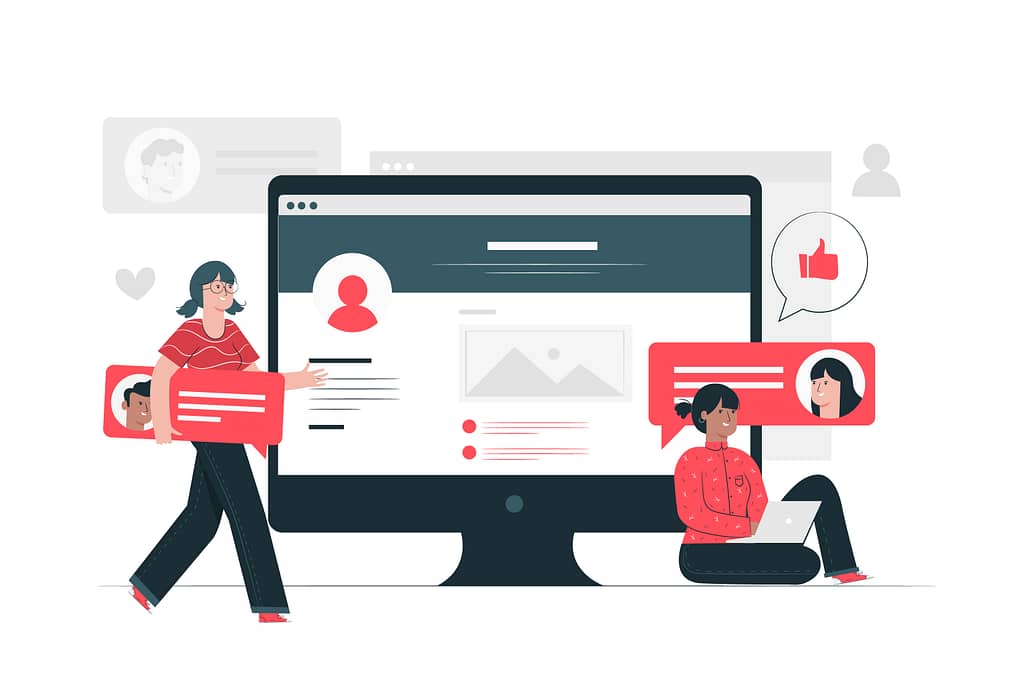
Designing a Website for E-commerce: Best Practices for Conversions and Sales
Web design plays a crucial role in the success of an e-commerce website. It encompasses various aspects including typography, layout, graphics, and user experience. A well-designed website can significantly impact conversions and sales by creating a visually appealing and user-friendly interface that engages customers and encourages them to make a purchase.
What is web design and why is it important in e-commerce?
Web design involves the process of creating and designing a website’s layout, structure, and appearance. In e-commerce, web design is especially important as it determines how users interact with the website and ultimately influences their purchasing decisions. A professionally designed website with user-friendly features and attractive visuals enhances the overall shopping experience and creates a strong brand image.

Understanding the basics of web design
In order to design a successful e-commerce website, it is essential to have a solid understanding of the fundamentals of web design. This includes knowledge of HTML and CSS, which are coding languages used to structure and style web pages. Additionally, designers must consider factors such as screen size, device compatibility, and search engine optimization to ensure the website is accessible and visible to a wider audience.
The impact of good web design on conversions and sales
A well-designed website has a direct impact on conversions and sales. By incorporating user-friendly features, intuitive navigation, and clear calls to action, web designers can guide visitors towards making a purchase. Additionally, a visually appealing layout and engaging graphics can create a positive brand perception and build trust with the target audience, ultimately leading to increased sales and customer loyalty.
How web design affects user experience
User experience (UX) is a critical element of web design that focuses on enhancing the overall experience of users. By creating a user-friendly interface, intuitive navigation, and optimizing page load times, web designers can improve the usability and satisfaction of website visitors. An intuitive and enjoyable user experience encourages repeat visits and increases the likelihood of conversions and sales.

How to create an effective e-commerce website?
Creating an effective e-commerce website requires careful planning and consideration of various factors. Here are some best practices to follow:
Choosing a responsive design for your website
Responsive design ensures that your website adapts and functions seamlessly across different devices and screen sizes. This is essential as an increasing number of consumers use their smartphones and tablets for online shopping. By making your website responsive, you provide a consistent and user-friendly experience, regardless of the device being used.
Implementing user experience (UX) design principles
UX design focuses on creating an enjoyable and intuitive experience for users. By incorporating UX design principles such as clear navigation, logical information architecture, and easy-to-use interfaces, you can enhance the overall user experience and increase conversions. Conducting user testing and gathering feedback can also help identify areas for improvement.
Optimizing website layout and navigation
An effective website layout and navigation system is crucial for guiding users through the buying process. Clear and organized layouts, with logical categorization and prominent product displays, can help users find what they are looking for quickly. Incorporating search functionality and breadcrumbs can further enhance the navigation experience.
What are the essential elements of web design for e-commerce?
Several essential elements contribute to the success of an e-commerce website:

Importance of typography and font choices
Typography plays a vital role in conveying your brand image and ensuring readability. Choosing appropriate fonts that align with your brand identity and are easy to read is essential for creating a visually appealing and professional website.
Using appealing graphics and visual elements
Graphics and visual elements can greatly enhance the visual appeal of your website. High-quality product images, engaging banners, and interactive visuals can capture visitors’ attention and encourage them to explore further. However, it is important to strike a balance, ensuring that visuals do not overwhelm the overall design and negatively impact loading times.
Utilizing design tools to enhance website aesthetics
Design tools and templates can be valuable resources for web designers. They offer a wide range of pre-designed elements, layouts, and themes that can be customized to suit your brand. By utilizing these tools, you can create aesthetically pleasing designs that stand out and align with your e-commerce goals.
How can web development impact e-commerce conversions?
Web development plays a crucial role in bringing the web design to life and ensuring its functionality and performance. Here are some ways web development can impact e-commerce conversions:
Understanding the role of coding in web development
Coding is an essential aspect of web development, as it involves writing the markup and programming languages necessary to create and modify websites. Understanding coding languages such as HTML, CSS, and JavaScript allows web developers to customize the design and functionality of a website to meet specific business requirements.
The importance of responsive web design
Responsive web design is essential for e-commerce websites to ensure compatibility across multiple devices. By implementing responsive design principles, web developers can create websites that automatically adjust and optimize their layout and content based on the user’s screen size and device, enhancing the user experience and increasing the likelihood of conversions.
Learning how to become a web designer
Becoming a web designer requires a combination of technical skills and creativity. There are various resources available, such as online courses and tutorials, that can help individuals learn web design. Gaining hands-on experience and continuously expanding knowledge in areas such as user interface design, interaction design, and visual design can further enhance web development skills and contribute to designing successful e-commerce websites.
Where can I learn web design for e-commerce?
Learning web design for e-commerce can be an exciting and rewarding journey. Here are some ways to get started:
Exploring online courses and resources
There are numerous online courses and resources available that cater to individuals at different skill levels. These courses cover a wide range of topics, including HTML and CSS basics, responsive web design, and user experience design. Some online platforms even offer free courses, making it easier for beginners to get started.
Building web design skills with practice and experience
Practice is crucial in mastering web design skills. By working on personal projects or volunteering for web design assignments, individuals can gain hands-on experience and further refine their skills. This practical experience allows web designers to understand real-world challenges and learn how to overcome them.
Utilizing web design tools and templates
Web design tools and templates are valuable resources for both beginners and experienced designers. These tools provide ready-to-use designs, graphics, and layouts that can be customized to suit individual needs. They can save time and effort, allowing designers to focus on other aspects of website development.
In conclusion, designing an effective e-commerce website is a multi-faceted process that requires careful consideration of various elements, including web design and web development principles. By incorporating responsive and user-friendly design features, optimizing website layout and navigation, and utilizing strategic visuals, e-commerce businesses can improve conversions and sales, enhancing the overall success of their online ventures.